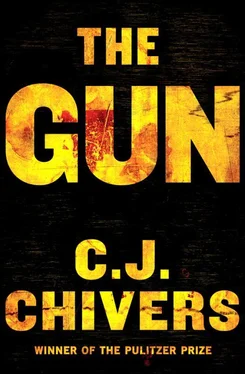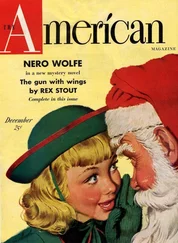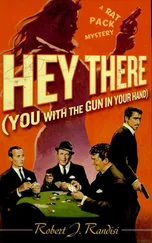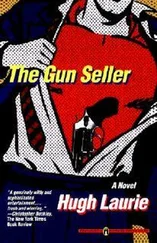Back on board the USS Tripoli after Hotel Company had suffered thirty-five casualties at Ap Sieu Quan, Lieutenant Chervenak seethed. He cleaned up and visited the stateroom where Captain Culver was bunking. The two officers talked about the M-16s’ malfunctions. Lieutenant Chervenak asked for advice. What would Captain Culver think if he wrote a letter to newspapers and to Congress detailing the company’s experiences? The Marine Corps was not helping its Marines. The truth about the M-16 needed to be told, somehow, if the problem was ever to be fixed. Captain Culver, a former enlisted man, was the son of a Marine. His father had enlisted in 1918 at the age of fifteen. Raised on Marine Corps bases and now commanding a company at war, he was more than reluctant to speak outside the chain of command. It was an agonizing thought. But Captain Culver knew Lieutenant Chervenak was right. Writing a letter, he told his executive officer, was a good idea.
Lieutenant Chervenak found a typewriter in the chaplain’s stateroom. The captain and he composed a draft. When they finished, he climbed belowdecks to the enlisted quarters, and asked Staff Sergeant Elrod to read it.
I am a Marine First Lieutenant and have been serving in a rifle company in Vietnam since the 15th of May. Ever since my arrival, immediately following the battle of hill 881, one controversy has loomed above all others—that of the M-16 rifle.
I feel that is my duty and responsibility to report the truth about this rifle as I have seen it. My conscience will not let me rest any longer.
The idea of a lightweight automatic weapon is a fine idea and I do not categorically reject the M-16 rifle as being useless. I do believe, however, that there is a basic mechanical deficiency within the weapon which causes a failure to extract. This failure to extract a spent casing from the chamber allows another round to be fed in behind the unextracted casing causing the rifle to jam. When this occurs, a cleaning and rod and precious seconds are needed to clear the weapon. A marine in a firefight does not have those precious seconds.
We are constantly told that improper cleaning and unfamiliarity with the weapon cause any malfunction which may occur. Any rifle that requires cleaning to the degree they speak of has no place as a combat weapon. I believe that the cold, hard facts about the M-16 are clouded over by a fabrication of the truth for political and financial considerations. I have seen too many marines hiding behind a paddy dike trying to clear their rifle to accept those explanations any longer.
Our battalion has test fired these rifles on numerous occasions, aboard the ship and in the field, to try to find a solution to this problem. All rifles were cleaned and inspected prior to these tests. Having supervised several of these tests, I will swear to the fact that at least 25 to 40% of the rifles malfunctioned at least once under these optimum conditions.
During a recent fight on the 21st of July, no fewer than 40 men in my company reported to me that their rifles had malfunctioned because of failure to extract. Because of these inoperative rifles we were severely hampered in our efforts to extract a platoon which had been pinned down. Lack of sufficient firepower also caused us great difficulty in getting our casualties out. Having 40 rifles malfunction in any rifle company is a serious matter, and in an understrengthened company such as ours, the gravity of the situation is greatly increased. This problem is increasing in its seriousness and I know that is a major morale problem in the company. Unfortunately, all our complaints and the results of our tests never seem to reach willing ears.
I do not mean for this letter to slap at my battalion, the Marine Corps, the Colt Manufacturing Company, the Defense Department or anyone else concerned.
It is written out of concern for the safety of the men in my company and of the great morale problem that the M-16 causes. I will stand and stake my reputation on the fact that we have had men wounded and perhaps killed because of inoperative rifles. The men in my company have absolutely no confidence in the weapon they carry, and yet, they will be asked to go on another operation in the very near future carrying this very same weapon. Word will come down from higher up, however, stating that no one will take a negative attitude about the M-16, nor will they speak of the weapon in a derogatory manner to any newsman.
I can only hope that men such as yourself, who are in a position to do something, WILL do something. The search for the truth is paramount in all of us and I ask you to look into this problem and search for the truth there. I will stand behind every word that I have written. I think that this problem has been overlooked too long and too many attempts have been made to gloss over a situation that endangers the lives of men. 79
Staff Sergeant Elrod finished the letter. He had served ten years in the Marine Corps. He had seen lieutenants come and go, and had a strong sense of how the officer ranks worked. Loyalty, by his reading of the inside game, meant working hard and shutting up. He handed the letter back to his executive officer. He liked it very much. “Hey, sir?” he said. “You’re not planning to make the Marine Corps a career, are you?”
On July 27, Lieutenant Chervenak mailed four copies of the letter. He sent one to the Barnesboro Star, his hometown newspaper in Pennsylvania. He mailed another to the Washington Post. The last two went to Senator Robert F. Kennedy and Representative Ichord. On all four he signed his name officially: First Lieutenant Michael P. Chervenak, executive officer, H Company, Second Battalion, Third Marines. 80
In all of the available records surrounding the bloody introduction of the M-16 to American military service, this stands as one of the few brave and candidly honest acts. The officers behind Project AGILE had produced a report no follow-up studies could support. General Johnson had quietly ordered the rifle into service knowing that it was unreliable. Colonel Hallock and Colonel Yount had enforced a hush about the M-16’s many performance problems, even while agreeing that the weapons’ failures were getting American soldiers killed. Officials at Colt’s were insisting in public that the weapon worked well while they reviewed internal reports that said it did not. It fell to a twenty-three-year-old Marine lieutenant, his unit thinned by casualties while their rifles jammed, to stake his name on the truth.
That summer, when the Marines of Second Battalion, Third Marines returned to the bush, fewer of them carried the M-16. They defied policy and tried all manner of schemes to acquire M-14s, or anything else. Private First Class Nickelson continued to carry his grenade launcher and his .38. Few wanted an M-16; a rumor even circulated that the rifles were not made by Colt’s but by Mattel, the manufacturer of plastic toys. For those who could not find an alternative weapon, the problems persisted. Private First Class Thomas C. Tomakowski, a radio operator in Hotel Company, was in a firefight and his M-16 froze, leaving him with only his wits with which to fight. A wounded North Vietnamese soldier surrendered to him. 81Tomakowski pointed his jammed rifle at the prisoner and pretended all was fine, hoping the man would not change his mind. In Foxtrot Company, Second Lieutenant Charles Woodard, a platoon commander, carried an AK-47 on a mission, having made his own judgment about the relative effectiveness of the rifles available in Vietnam, no matter what the generals said. 82
And during the heat of 1967, another officer, Second Lieutenant Charles P. Chritton, also of Foxtrot Company, began to have a recurring dream, which flowed from one of his own worst episodes. On June 28, one of his Marines had been killed while on a flanking move against a group of Viet Cong guerrillas on a ridge. A pair of Marines had swung far to the left during the firefight. They dashed through vegetation and surprised the guerrillas at close range. But as the Marine opened fire his M-16 seized up. One round did not extract and the rifle tried to feed a round in behind it, leaving the Marine with a jam that would take many seconds, even minutes, to clear. He was helpless. The Viet Cong turned and killed him. After recovering the Marine’s body and the jammed rifle, Lieutenant Chritton allowed his fury to guide him. He and other Marines carried the dead Marine and his rifle to the battalion command post and entered the tent to confront the battalion commander with the facts. The commander and the executive officer pulled the lieutenant aside, away from the Marine’s corpse. The executive officer produced a camera, placed the jammed rifle on a table, and made a series of photographs. “We’ll take care of this,” the commander told him. But nothing had come of it, and soon Lieutenant Chritton’s dream started to follow him through his nights. In it, he was home in the United States, and he had kidnapped the president of Colt’s and forced him to admit that Colt’s was knowingly selling bad rifles to the government. Lieutenant Chritton was hardly the irrational sort. He certainly was no criminal. He left the Marine Corps and went on to a long civilian career as a lawyer. The dream stayed with him for his remaining months in Vietnam, and it visited him intermittently after he returned home to the United States.
Читать дальше











